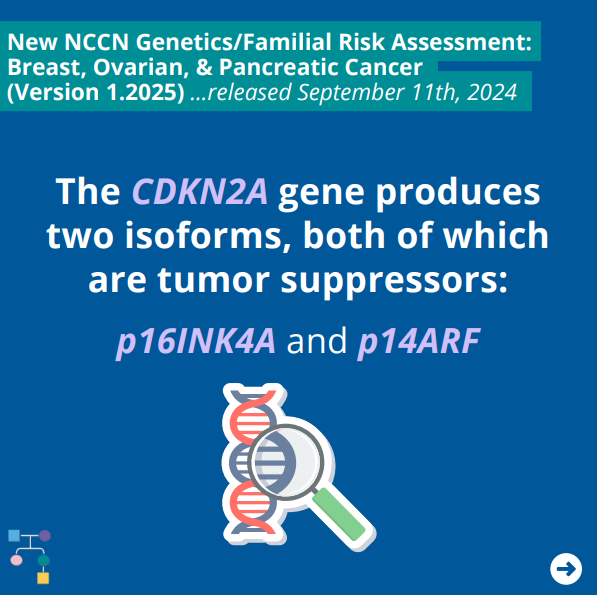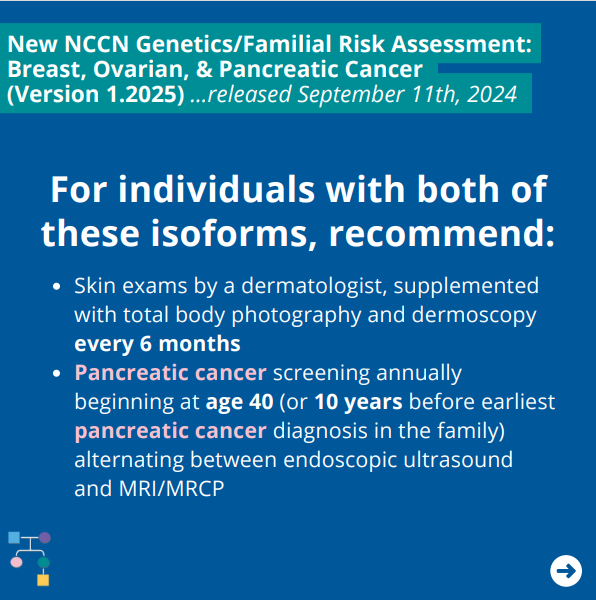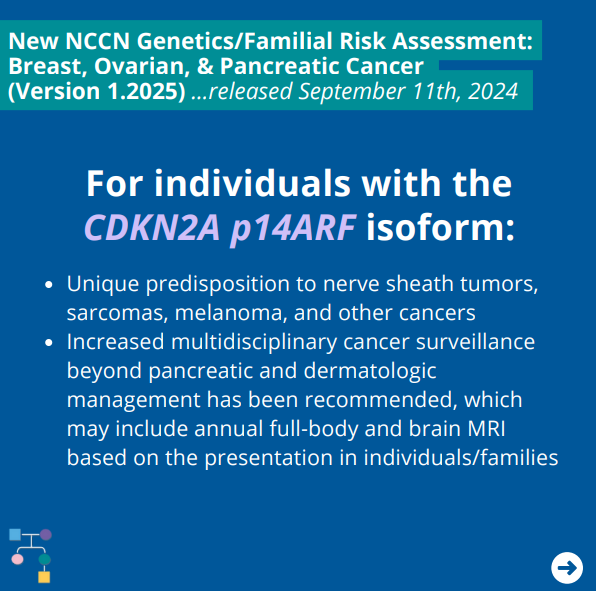



The National Comprehensive Cancer Network (NCCN) released updated Genetic/Familial High-Risk Assessment: Breast, Ovarian, and Pancreatic Cancer guidelines on September 11th, 2024 (Version 1.2025), which included the following CDKN2A updates ⤸
The CDKN2A gene produces two isoforms, both of which are tumor suppressors:
➡️ p16INK4A and p14ARF
For individuals with both of these isoforms, recommend:
➡️ Skin exams by a dermatologist, supplemented with total body photography and dermoscopy every 6 months
➡️ Pancreatic cancer screening annually beginning at age 40 (or 10 years before earliest pancreatic cancer diagnosis in the family) alternating between endoscopic ultrasound and MRI/MRCP
For individuals with the CDKN2A p14ARF isoform:
➡️ Unique predisposition to nerve sheath tumors, sarcomas, melanoma, and other cancers
➡️ Increased multidisciplinary cancer surveillance beyond pancreatic and dermatologic management has been recommended, which may include annual full-body and brain MRI based on the presentation in individuals/families
To read more, you can check out the full guidelines by creating a FREE account at:
https://www.nccn.org/professionals/physician_gls/pdf/genetics_bop.pdf
